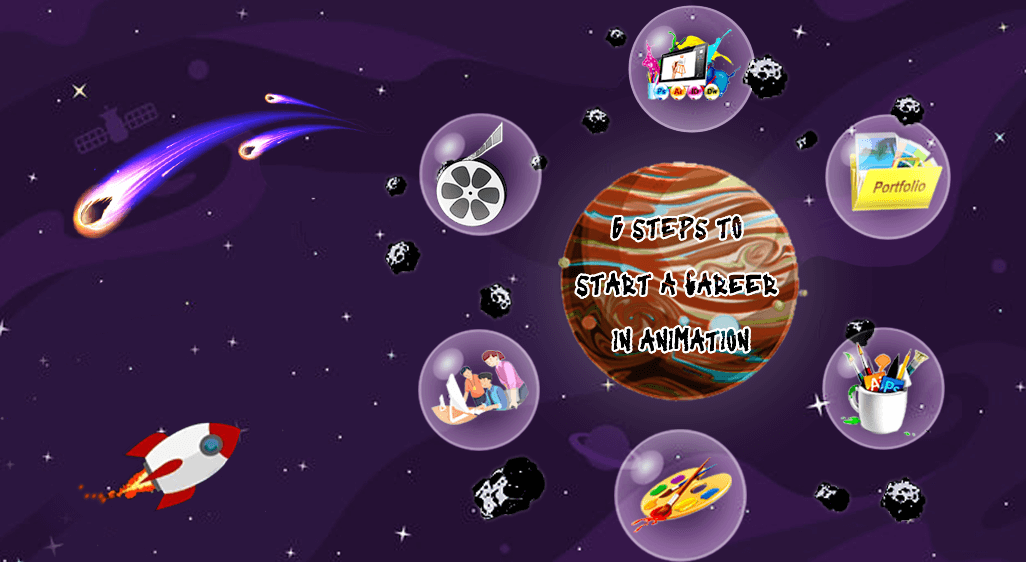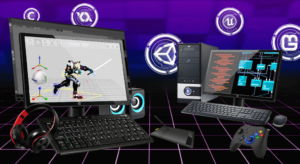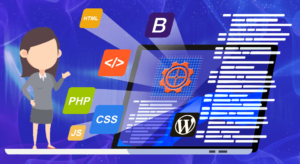
6 Steps To Start A Career In Animation?
Arena Animation Park Street has welcomed hundreds of students and turned them into professional animators. Most of them now have a high-paying animation career in studios like MPC, Pixel Graphics, Bot VFX, Digi Toonz and Probability Gaming.
So, when it comes to how to start a career in animation, we are in a unique position to answer. There are 6 steps you must to take to become an animator.
1. Practice the fundamentals – drawing
You don’t need to be a Picasso. But you must be able to draw on paper. Learn the basics skills like composition, still-life and the 12 principles of animation. Practicing improves your drawing. And when you have a solid grip on it, you’ll be able to transfer it to animation and creating through digital tools.
2. Learn graphic design and illustration
Companies today hire animators who are also illustrators, graphic designers and After Effect artists. You don’t need to be an expert on all of them. But you do need to know the nitty-gritties.
So, it’s good practice to have other irons in the fire. Besides learning to draw, learn illustration by practicing Photoshop. Some talent in graphic design is also necessary. Why? Because most of the jobs in the real world are related to graphic design.
3. Join an animation course
Animation studios don’t want a college degree. They want someone with solid animation skills. So, you don’t need to have a graduation degree to start a career in animation.
But a certified animation course will go a long way. It will not only teach you the essentials but also give you the basics of graphics, character design, digital design, scriptwriting, rendering, 3D modelling and more. These are qualities every animator must-have.
Explore animation courses near you, pick the best choice and enroll. An additional tip here is to watch animation tutorials on YouTube. There are plenty of award-winning animators who’ve uploaded content. It’s free and extremely helpful in building your skills.
4. Build a portfolio
Learning what an animator does is phase 1. Phase 2 is building a standout portfolio because that’s how you get your foot in the door. It demonstrates your skill to potential employers. Make it snappy by including the best work in it. And as you get more skilled, keep updating it with recent samples.
5. Make a stunning demo reel.
This is the most important step to starting a career in animation. Your showreel is all a studio cares about. Put a lot of hard work, effort and time into it. Ensure that when you send a resume, the demo reel is front and centre. And if you need tips to make an attention-grabbing showreel. We wrote a whole blog on it.
6. Look for an internship.
Disney is not going to hire an animator with no experience. You need to have a few projects under your belt before you catch the eye of the big wigs. Start working as soon as possible. A paid internship or even a free part-time gig will do.
You will learn more by creating for a business than in a classroom. Besides building your skills, it will also teach you how to work as a professional. A rule of thumb here is to try new things. Get varied experience. Pick up different skills and become a more versatile animator.
What software and hardware do you need for a career in animation?
An animator is only as good as his or her tools. In this case, it means software and computers. If you’re thinking of a 2D animation career, these are the tools you should learn:
- After Effects: This is a major and powerful tool. It is also useful for 3D animation, printing and photogrammetry.
- Animate CC (Flash): A very decent choice, it is essential to learn light, colour and perspective. It is great for creating animated YouTube videos.
- Adobe Photoshop: It will teach you the concepts of design and composition.
- Adobe Premiere Pro: A brilliant choice to see how 2D animation principles are applied.
- Storyboarder: This is the tool for character designing – the holy grail of animation.
If 3D animation is where your heart is, these are the tools you need to learn:
- Maya: Don’t listen to debates. Maya is the best place to start if you want to learn 3D animation, modelling or simulation. It has all you need to start your career.
- Arnold Renderer: When it comes to FX Dynamics & Simulation, Arnold is the finest choice.
Most of these tools burn a hole in your pocket. It is another reason why an animation course is the best choice. You won’t have to shell out thousands and thousands of bucks to buy each software. The animation institute will give you access to them.
And if you want to practice your skills at home, try these free alternatives. For instance, Blender is the perfect choice to brush your animation, modelling, texturing and lighting skills.
A good computer is also essential to start your career in animation. For 2D animation, you will not need major processing power. A system you use for everyday work will do. Make sure that:
- The processor is i5 or above.
- The RAM is 8GB minimum.
- The hard drive is a 1TB HDD.
You can also invest in a tablet. Don’t buy a fancy one. A sturdy option is best. The most popular is the Wacom tablet.
For 3D animation, you’ll need a proper workstation because rendering requires a lot of processing juice. Since they are expensive, the smart choice is to enroll in an animation institute. They will give you access to the latest and best workstations. For practicing at home, again, a strong tablet with the right buttons and functions is a great choice.
Your takeaway on starting a career in animation
Sign up for an animation course and watch tutorials to create a solid foundation. Next, polish your skills by practicing your basics. Keep updated with all the tools and software.
Put as many hours as you can in your portfolio, but especially in the demo reel. And lastly, get feedback from peers, mentors, and even online communities. They will help you improve and achieve that dream animation job!











